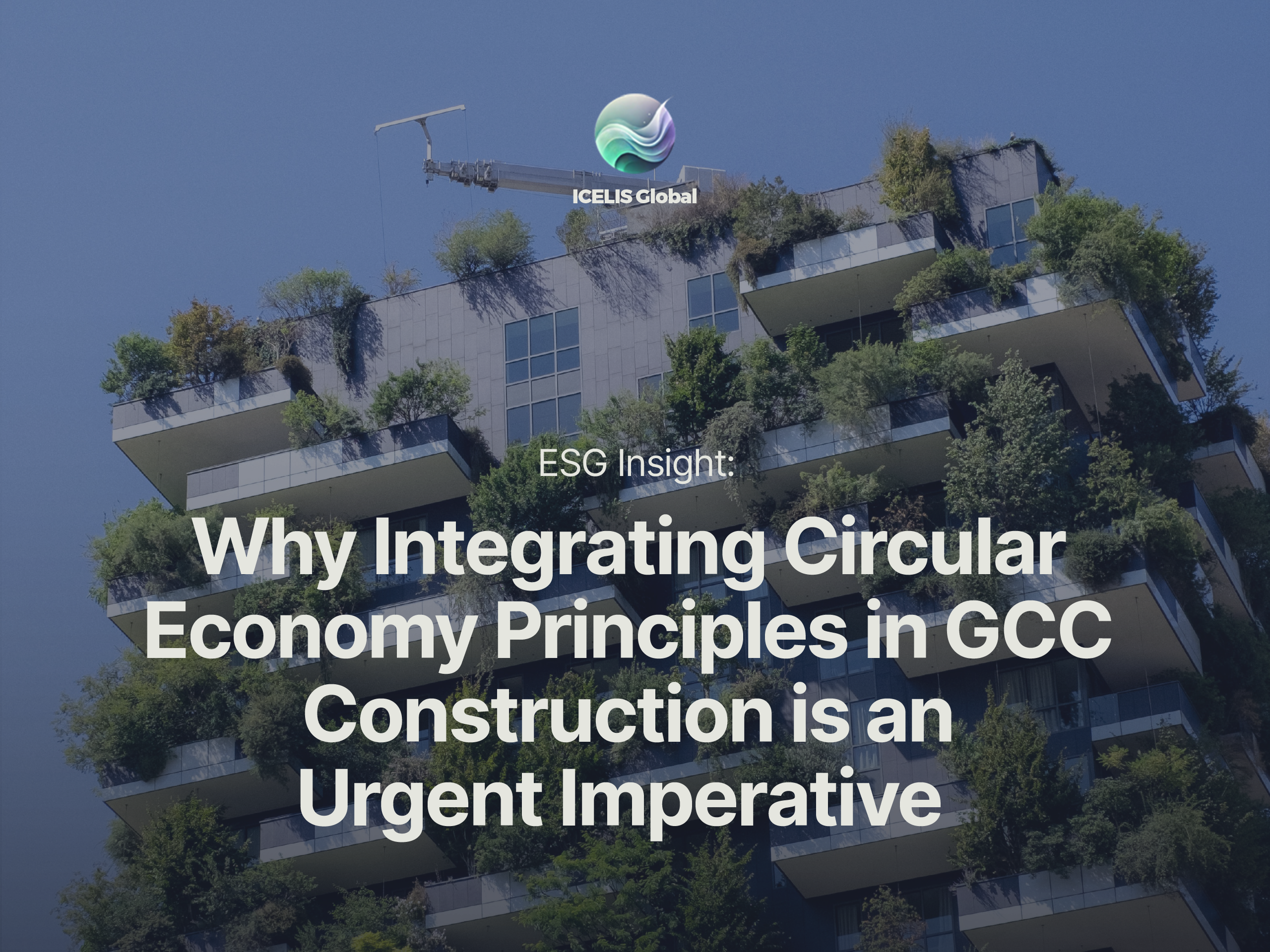Introduction: A Sector at a Crossroads
The construction industry in the Gulf Cooperation Council (GCC) region is booming powered by mega projects like Saudi Arabia’s NEOM, and the UAE’s Dubai 2040 Urban Master Plan. Yet, these projects could result in carbon emissions and potential environmental degradation.
As governments across the GCC pledge net-zero emissions and it becomes increasingly important to navigate the ESG maze, the concept of a circular economy has emerged as a vital solution. The circular economy GCC vision calls for a systemic shift moving from a linear “take-make-dispose” model to one that emphasizes reuse, recycling, and resource regeneration. This shift is not only aligned with global ESG (Environmental, Social, and Governance) standards but is also critical for ensuring the long-term viability of the construction industry in the region.
In this ESG insight, we will explore the important key aspects of a circular economy and how it can be implemented.
Reusing Materials and Minimizing Waste
A cornerstone of the circular economy is material efficiency i.e. something the GCC construction industry can greatly benefit from. Instead of relying solely on new raw materials, construction firms are increasingly turning to recycled steel, concrete, and glass, reducing the demand for virgin resources. For instance, in Masdar City, developers have successfully integrated recycled concrete into their infrastructure projects, demonstrating the practicality of large-scale material reuse.
Another strategy gaining traction is urban mining which is the practice of extracting valuable construction materials from old buildings. By harvesting high-quality steel, aluminum, and glass from decommissioned structures, developers can reduce both landfill use and supply chain emissions.
Designing for Deconstruction and Adaptability
Unlike traditional buildings that are demolished at the end of their life cycle, circular construction promotes designing for deconstruction. This means creating structures that can be easily taken apart, allowing materials to be reused or repurposed. This approach also supports modular construction, where components are prefabricated and assembled on-site in ways that simplify future disassembly.
A standout example of this principle in action is Saudi Arabia’s The Line part of the NEOM project. The project emphasizes modularity and reconfigurability, ensuring buildings can adapt to future needs without generating massive demolition waste. Bolted joints replace permanent adhesives, enabling parts to be removed, upgraded, or relocated with ease.
Switching to Low-Carbon and Bio-Based Materials
The GCC’s shift toward sustainable materials is accelerating. Developers are exploring alternatives such as geopolymer concrete, which emits far less CO₂ than traditional Portland cement, and cross-laminated timber (CLT), a renewable and carbon-sequestering construction material. In Dubai’s Sustainable City, bio-based panels made from date palm waste and recycled aggregates are being used extensively, showing how local materials can play a key role in circular construction.
These innovations help projects meet LEED and Estidama green building certifications while also reducing operational costs and embodied carbon key metrics in ESG reporting.
Embracing Digital Innovation for Circular Efficiency
Digital tools like Building Information Modelling (BIM) and AI-driven analytics are critical enablers of the circular economy in construction. These technologies help track material flows, reduce waste, and optimize resource use throughout a building’s life cycle. GCC-based companies such as ALEC are already adopting AI-enhanced BIM platforms to design projects with maximum material efficiency and minimal environmental impact.
Real-time data from sensors embedded in buildings also allows facility managers to monitor energy and water usage, quickly identifying areas where resources can be conserved or recycled.
Conclusion: Building a Circular Future
Integrating circular economy principles into the construction sector is no longer optional in the circular economy GCC narrative. It’s an essential ESG strategy that aligns with regional sustainability goals and global climate commitments. From reducing waste and emissions to fostering innovation and resilience, circular practices are setting a new standard for how cities in the Gulf are built.
As governments and developers across the GCC embrace this paradigm shift, it’s important to keep in mind that they are not just meeting ESG compliance. They are also leading a construction revolution that promises a more sustainable, efficient, and future-ready built environment.
